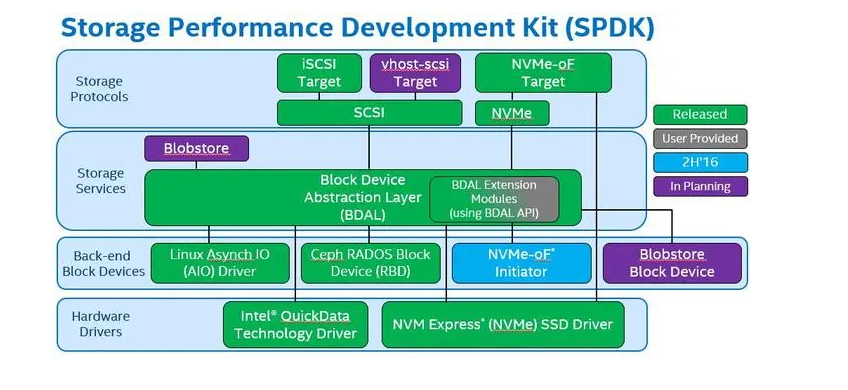以下是一个简单的DPDK ARP老化代码示例,使用C语言编写:
#include <stdio.h>
#include <stdint.h>
#include <inttypes.h>
#include <rte_eal.h>
#include <rte_common.h>
#include <rte_ethdev.h>
#include <rte_arp.h>
#define BURST_SIZE 32
static volatile bool quit_signal;
static void signal_handler(int signum) {
if (signum == SIGINT || signum == SIGTERM) {
printf("\nSignal %d received, preparing to exit...\n", signum);
quit_signal = true;
}
}
int main(int argc, char *argv[]) {
int ret;
uint16_t nb_ports;
struct rte_mempool *mbuf_pool;
struct rte_eth_conf port_conf = {
.rxmode = {
.max_rx_pkt_len = RTE_ETHER_MAX_LEN,
.split_hdr_size = 0,
.offloads = DEV_RX_OFFLOAD_CHECKSUM,
},
.txmode = {
.offloads = DEV_TX_OFFLOAD_IPV4_CKSUM,
},
};
struct rte_eth_txconf tx_conf = {
.offloads = DEV_TX_OFFLOAD_IPV4_CKSUM,
};
ret = rte_eal_init(argc, argv);
if (ret < 0)
rte_exit(EXIT_FAILURE, "Error initializing DPDK EAL\n");
signal(SIGINT, signal_handler);
signal(SIGTERM, signal_handler);
nb_ports = rte_eth_dev_count_avail();
if (nb_ports == 0)
rte_exit(EXIT_FAILURE, "No Ethernet ports found\n");
mbuf_pool = rte_pktmbuf_pool_create("MBUF_POOL", 8192,
BURST_SIZE, 0, RTE_MBUF_DEFAULT_BUF_SIZE, rte_socket_id());
if (mbuf_pool == NULL)
rte_exit(EXIT_FAILURE, "Error creating mbuf pool\n");
for (int i = 0; i < nb_ports; i++) {
ret = rte_eth_dev_configure(i, 1, 1, &port_conf);
if (ret < 0)
rte_exit(EXIT_FAILURE, "Error configuring port %d\n", i);
ret = rte_eth_rx_queue_setup(i, 0, BURST_SIZE,
rte_eth_dev_socket_id(i), NULL, mbuf_pool);
if (ret < 0)
rte_exit(EXIT_FAILURE, "Error setting up RX queue for port %d\n", i);
ret = rte_eth_tx_queue_setup(i, 0, BURST_SIZE,
rte_eth_dev_socket_id(i), &tx_conf);
if (ret < 0)
rte_exit(EXIT_FAILURE, "Error setting up TX queue for port %d\n", i);
ret = rte_eth_dev_start(i);
if (ret < 0)
rte_exit(EXIT_FAILURE, "Error starting port %d\n", i);
rte_eth_promiscuous_enable(i);
}
printf("ARP aging started...\n");
while (!quit_signal) {
rte_delay_ms(1000);
for (int i = 0; i < nb_ports; i++) {
struct rte_arp_stats stats;
memset(&stats, 0, sizeof(stats));
rte_eth_dev_filter_ctrl(i, RTE_ETH_FILTER_ARP,
RTE_ETH_FILTER_GET_STATS, &stats);
printf("Port %d ARP old_entry_count=%"PRIu64"\n",
i, stats.old_entry_count);
rte_eth_dev_filter_ctrl(i, RTE_ETH_FILTER_ARP,
RTE_ETH_FILTER_FLUSH, NULL);
}
}
for (int i = 0; i < nb_ports; i++) {
rte_eth_dev_stop(i);
rte_eth_dev_close(i);
}
printf("ARP aging stopped.\n");
return 0;
}
该示例代码使用DPDK库来创建并配置一个或多个Ethernet端口,并在循环中执行ARP老化处理。在每个循环迭代中,它将获取每个端口的ARP统计信息(包括旧条目计数),然后刷新ARP缓存,以使其开始进行新的ARP老化。
要使用此代码,请按照以下步骤操作:
- 安装DPDK并设置环境变量。
- 编译此程序,例如:
gcc -o arp_aging arp_aging.c $(pkg-config --libs libdpdk) - 运行程序,例如:
sudo ./arp_aging -l 4-5(其中-l参数指定要使用的CPU核心)。 - 按Ctrl+C停止程序。
注意,此示例仅演示了如何在DPDK中执行ARP老化处理。要实现更完整的ARP缓存功能,还需要编写用于处理收到的ARP请求和回复的代码,以及用于更新ARP缓存的代码。





















